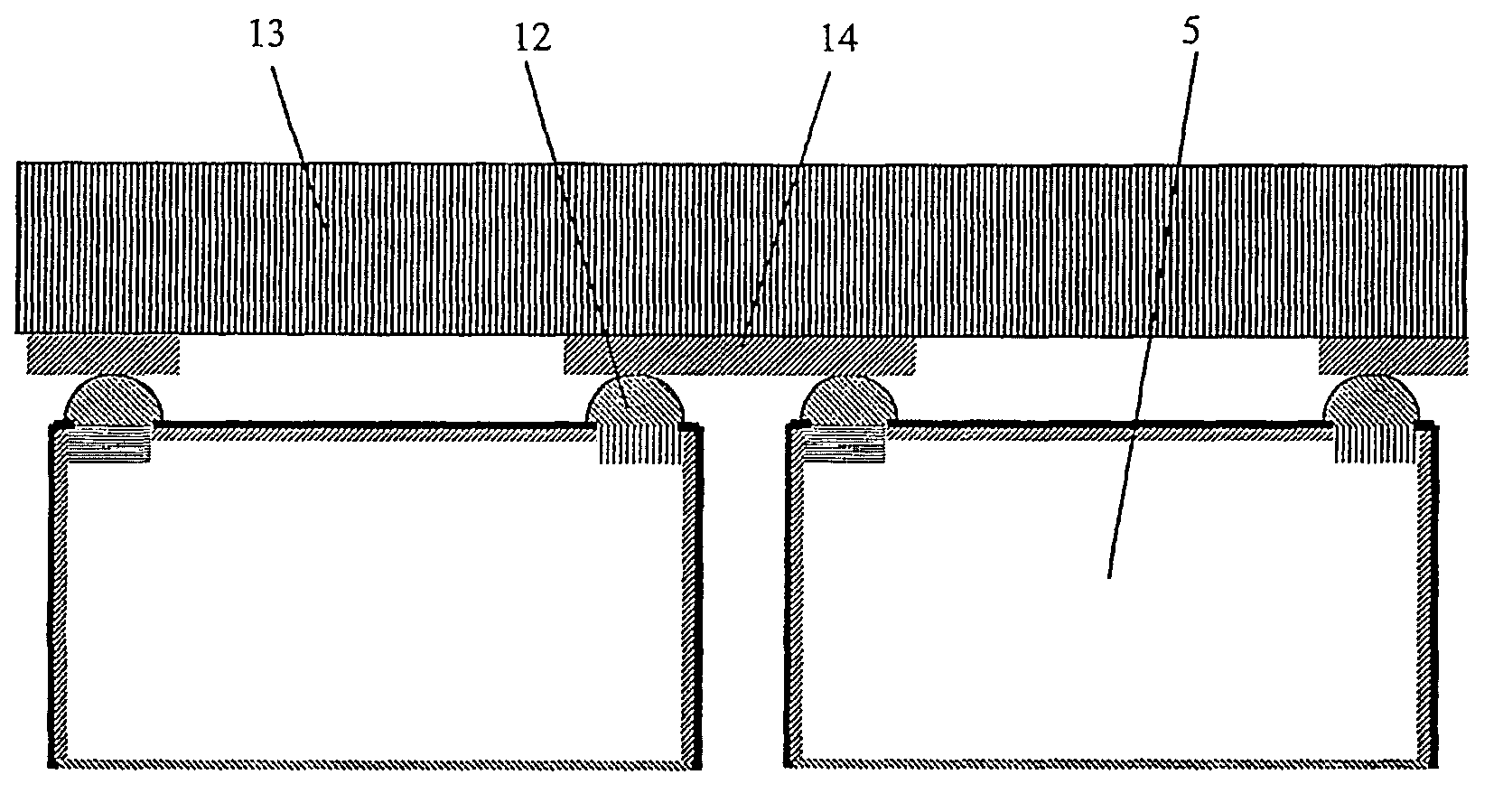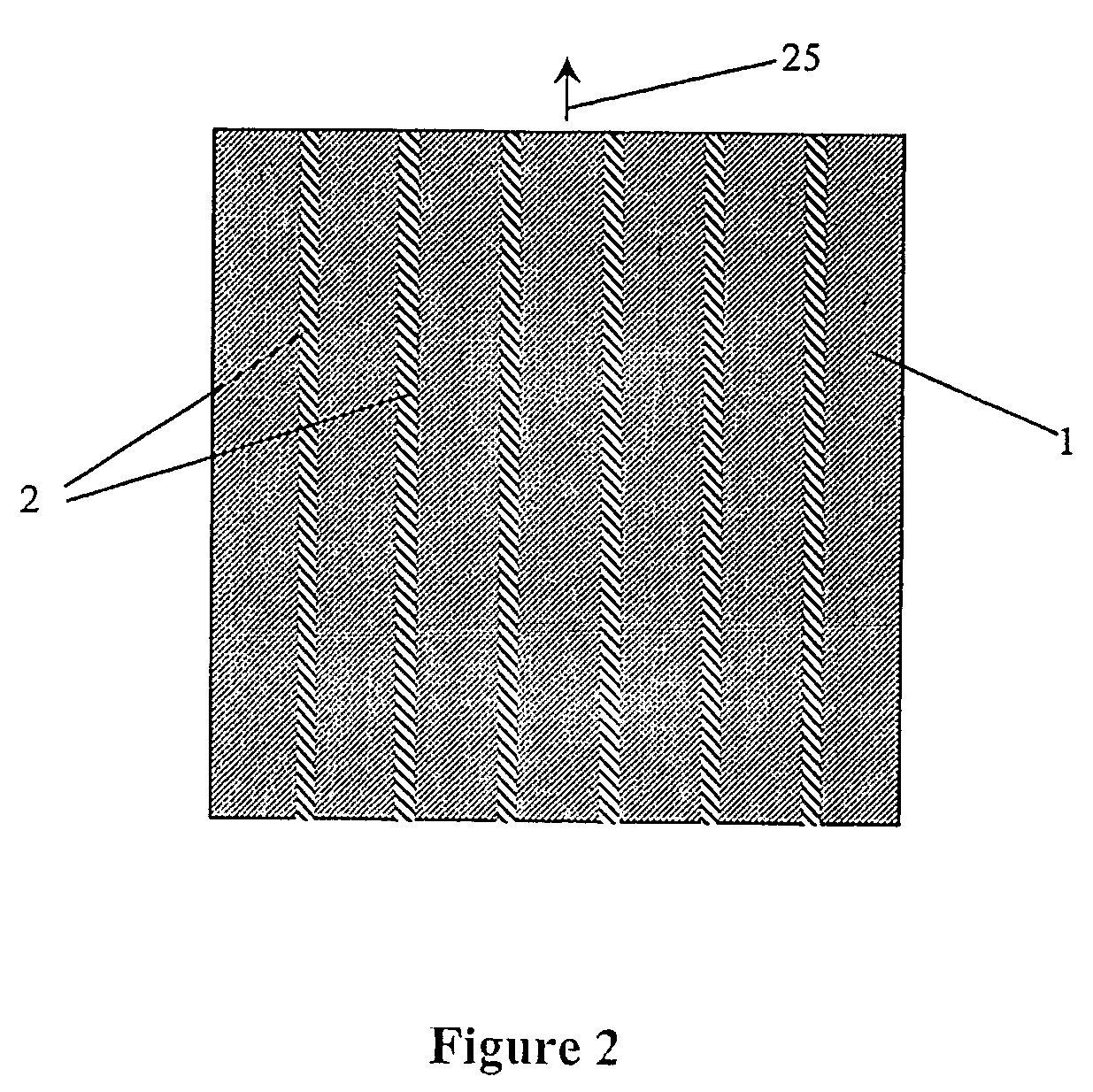Method of making thin silicon sheets for solar cells
a solar cell and silicon sheet technology, applied in the direction of sustainable manufacturing/processing, final product manufacturing, after-treatment details, etc., can solve the problems of not always the case, the cost of a starting silicon wafer is typically nearly half of the value of the finished photovoltaic module, and the photovoltaic solar cell industry is extremely cost sensitiv
- Summary
- Abstract
- Description
- Claims
- Application Information
AI Technical Summary
Benefits of technology
Problems solved by technology
Method used
Image
Examples
Embodiment Construction
[0014]In the present invention, by “surface of a silicon substrate of substantially (111) orientation” is meant that the silicon substrate is either of precisely (111) orientation, or otherwise sufficiently close to (111) orientation that when the lateral channels have been etched, adjacent channels either meet or approach each other sufficiently closely that the layer may be detached from the substrate by the application of force substantially without damaging the layer. Typically the surface of the silicon substrate is at an angle of from 0° to about 10° from the (111) orientation, more typically from 0° to about 7°, more typically from 0° to about 40°.
[0015]Preferably, adjacent and opposing etch fronts meet to provide for separation of the layer of silicon which will no longer be joined to the substrate when the etch fronts meet. Alternatively, the etching proceeds until adjacent and opposing etch fronts almost meet and the layer of silicon is then mechanically detached by breaki...
PUM
| Property | Measurement | Unit |
|---|---|---|
| thickness | aaaaa | aaaaa |
| angle | aaaaa | aaaaa |
| angle | aaaaa | aaaaa |
Abstract
Description
Claims
Application Information
 Login to View More
Login to View More - Generate Ideas
- Intellectual Property
- Life Sciences
- Materials
- Tech Scout
- Unparalleled Data Quality
- Higher Quality Content
- 60% Fewer Hallucinations
Browse by: Latest US Patents, China's latest patents, Technical Efficacy Thesaurus, Application Domain, Technology Topic, Popular Technical Reports.
© 2025 PatSnap. All rights reserved.Legal|Privacy policy|Modern Slavery Act Transparency Statement|Sitemap|About US| Contact US: help@patsnap.com



